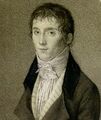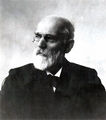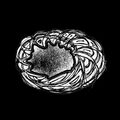Template:Selected anniversaries/March 7: Difference between revisions
No edit summary |
No edit summary |
||
| Line 46: | Line 46: | ||
||1900: Physicist and academic Fritz Wolfgang London born. He will make fundamental contributions to the theories of chemical bonding and of intermolecular forces (London dispersion forces). With his brother Heinz London, he will make a significant contribution to understanding electromagnetic properties of superconductors with the London equations. | ||1900: Physicist and academic Fritz Wolfgang London born. He will make fundamental contributions to the theories of chemical bonding and of intermolecular forces (London dispersion forces). With his brother Heinz London, he will make a significant contribution to understanding electromagnetic properties of superconductors with the London equations. | ||
||Roger Randall Dougan Revelle | ||1900: Joseph Ehrenfried Hofmann born ... historian of mathematics, known for his research on Gottfried Wilhelm Leibniz. Pic. | ||
||1909: Roger Randall Dougan Revelle born ... scientist and scholar who was instrumental in the formative years of the University of California San Diego and was among the early scientists to study anthropogenic global warming, as well as the movement of Earth's tectonic plates. Pic. | |||
File:Betty Holberton.jpg|link=Betty Holberton (nonfiction)|1917: Pioneering computer scientist and programmer [[Betty Holberton (nonfiction)|Betty Holberton]] born. She will be one of the six original programmers of ENIAC, the first general-purpose electronic digital computer, and the inventor of breakpoints in computer debugging. | File:Betty Holberton.jpg|link=Betty Holberton (nonfiction)|1917: Pioneering computer scientist and programmer [[Betty Holberton (nonfiction)|Betty Holberton]] born. She will be one of the six original programmers of ENIAC, the first general-purpose electronic digital computer, and the inventor of breakpoints in computer debugging. | ||
Revision as of 08:36, 31 January 2019
1765: Inventor Nicéphore Niépce born. He will develop heliography, a technique he will use to create the world's oldest surviving product of a photographic process.
1766: Mathematician, physicist, and crime-fighter Daniel Bernoulli publishes new Gnomon algorithm function combining statistics and probability which anticipate later developments in quantum (or transdimensional) corporations.
1788: Physicist and academic Antoine César Becquerel born. He will pioneer the study of electric and luminescent phenomena.
1875: Flying bison (Bison pterobonasus) sighted near Roswell, New Mexico.
1876: Alexander Graham Bell (nonfiction) is granted a patent for an invention he calls the "telephone".
1875: Gambling Den Fight wins Royal Society award for most exciting new illustration of the year.
1886: Mathematician and physicist G. I. Taylor born. He will make major contributions to fluid dynamics and wave theory.
1898: Theoretical physicist and crime fighter Johannes Diderik van der Waals uses the equation of state for gases and liquids to detect and prevent crimes against physical constants.
1917: Pioneering computer scientist and programmer Betty Holberton born. She will be one of the six original programmers of ENIAC, the first general-purpose electronic digital computer, and the inventor of breakpoints in computer debugging.
1950: Cold War: The Soviet Union issues a statement denying that Klaus Fuchs served as a Soviet spy.
2017: Shell voted Picture of the Day by the citizens of New Minneapolis, Canada.
2019: Steganographic analysis of Confessions of a Quantum Artist-Engineer (1) unexpectedly reveals "at least a megabyte" of previously unknown Gnomon algorithm functions.











